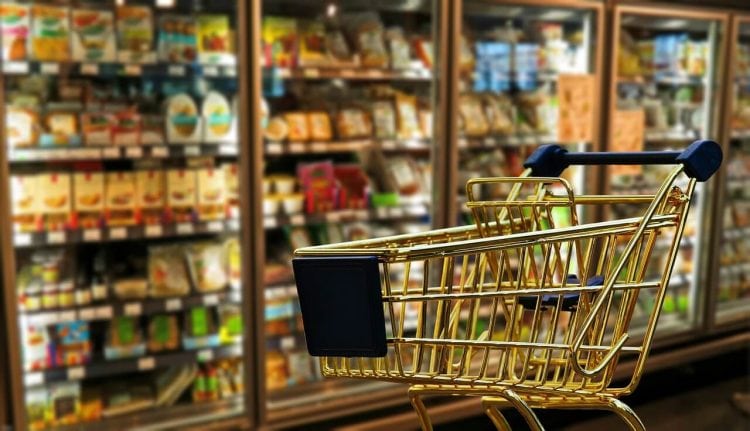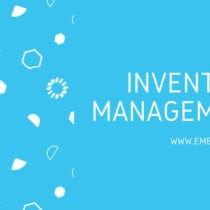25 Retail Terms Every Modern Retailer Must Know

Introduction
Retail industry evolving everyday and we have seen the era where it has risen to influence of day to day life to such an extent that we can’t live without it.
If you’re a retailer, you already have knowledge of getting things done, buying and selling stuff.
But retail is more than just selling stuff.
There are new retail terms and definitions that add up every day into the retail business and should know them clearly.
These terms are frequently used in modern day retail business, and if you’re not familiar with them, you might end up doing some bizarre mistake and embarrass yourself.
These retail terms are a must know for every retailer today, let’s get hold of them.
Retail Terminology for Modern Retailers
Anchor Store
It is the biggest store set up in the mall or shopping center. It could be one of the biggest stores.
Having a shop next to anchor store helps in getting the footfall from that store. So the traffic gets diverted to your store with the help of anchor store.
You get the advantage from the popularity of an anchor store.
Next time, be sure of an anchor store while looking for a space for your shop.
Big Data
It is a set of huge data that would require a program, software, or complicated algorithms to make sense of it all.
Usually, the data collected from a huge number of customers, their behavior and their interests. This data can be very useful in giving the product the customers actually want or need.
Consumer behavior studies are important in today’s times for creating an influential marketing strategy. Analyzing big data requires a lot of work, but it pays when you apply it.
Click and Collect
The feature of buying things online through a store’s website and then picking it up later.
It allows the consumer to buy products before stock lasts. It is also convenient for them because now they can pick them whenever they want to.
Cross Merchandising
Putting up together two products that consumers usually use together is called cross-merchandising.
For example, having lemons with a bottle of tequila.
This cross merchandising can raise the sales of the other commodity, in this case, is lemons.
You can practice this on regular basis with different products like pasta and sauces, or, whiskey and coke, there are oodles of combinations, you just have to improvise.
Dead Stock
The stock of a commodity which is just lying and doesn’t getting purchased by consumers.
Most of the items that constitute to dead stock are seasonal or only require at a particular time. It also can happen that you may buy the item more than you can sell, which is a bad thing.
So dead stock hurt your retail business by consuming space and money.
You can avoid it by managing the items on the basis of demand and other factors.
Endless Aisles
The showrooms, instead of showing all their stocks, have smart screens or iPads in the store that can show all the inventory stock on the screen, the later consumer can just buy it after seeing it, or order it to their home.
This has become a thing nowadays and people like to shop this way.
Etailing
This a short form of electronic retailing. Basically, the practice os selling things online on a platform is called etailing.
There are many etailers on the internet, from amazon to local internet stores.
A platform that sells goods online is etailing. It is a modern word and widely used by people.
Flash Sales
Sales that happen for a limited period of time is called flash sales.
A lot of online e-commerce attract consumers by having flash sales regularly with unbelievable discounts and prices.
Flash sales usually happen by giving proper notice to consumer days prior to it.
This is a solid way to market your e-commerce store among people. People also take part in these flash sales enthusiastically.
Green Retail
Retailers indulging themselves in environment-friendly practices is called green retail.
This can include going for recyclable packaging, using paper shopping bags instead of plastic, going for solar panels and led lights.
Green retail is getting popular for all the right reasons.
High Speed Retail
High speed retail is a process of retail where you reduce the time of purchasing by conveniently providing things the consumers need.
Drive-through are the best example of high speed retail.
You give an order, and then take it by the end of the drive-thru. High speed retail can increase your sales drastically.
Other examples are mobile trucks and pop-up stores. mPOS systems can be helpful in high speed retail because you can have real time data.
Integrated Chain Supply
A chain supply that works together as a whole unit, including manufacturer, transport, distributors, everyone constitute to a chain.
This type of chain supply is responsive to minor change and very quick in delivering products.
Integrated chain supply can work collaboratively efficiently, sharing information at every point.
Keystone Pricing
When you sell the merchandise double the cost of wholesale price, that price is called keystone price.
Doubling up usually covers storing, transporting and service costs.
It is an easy way to cover up and make decent profits.
Keystone pricing is an old way of estimation of the selling price.
Layaway/ lay-by
An agreement in which the seller reserves an item for a consumer until the consumer completes all the payments necessary to pay for that item.
The arrangement is good for both seller and consumer because, in that way, the consumer can afford products, meanwhile, the seller is getting the money he wants.
Mass Customization
Every customer has different needs from the same product.
Mass customization means, altering or tailoring the product from every consumer according to its needs and still be able to produce it in large numbers.
It can be achieved by making the final product, a combination of small parts and elements.
A lego is a good example, you can make anything from a single building block. Nike has these stores where you can tailor a certain design your way.
Niche Retailing
Retailing by targeting a certain segment of the market is called niche retailing.
Suppose you’re only selling smartphones or electronic items, or brick and mortar.
Niche retailing gives you a set growth pattern and you tend to learn things of a certain business easily.
It is easy to target one segment of the market than selling in different ones.
This can make you see your strengths in one segment and weaknesses in other so that you can focus on one particular segment and know which.
Omni-channel Retailing
The phenomenon of creating the effects of your sales on multiple platforms is called omnichannel retailing, and making consumers choose from different channels of retailing and buying different products.
This type of retailing usually requires large initial investment but if you successfully pull this off, you’re going to create huge profits.
This type of retailing usually is common if your retailing shop has an app.
So you can give customers an option to choose your other segments. This is the future of retailing and soon everyone is going to omnichannel.
Prestige Pricing
A brand that has a price on the items way more than their actual costs, because of the name associated with it, exclusivity, design or any reason for it, is called prestige pricing.
The prices are decided on the basis of the value of a brand, rather than product. For example Louis Vuitton.
Planogram
The way of setting merchandise on the shelves so that it can attract maximum consumers.
Arranging certain items in a visual representation that look better can boost up sales.
You can place an item that can represent your whole segment of a particular part of the shop. There are so many ways where a single item can be used for display in different ways.
This is art that needs to be practiced a lot before you can deliver it.
Relationship Retail
Prioritizing relationship between the seller and consumer by selling them items is called relationship retail.
It can come from various loyalty programs, by giving points to the consumer who buys goods, and various discounts.
You can build a strong relationship with the customer in order to take his business. There is no better marketing strategy than consumer service.
Stock Keeping Unit
SKU is a unique code given to a product by the inventory so that they can keep track of the product and manage it properly in the inventory.
It represents all the attributes of the given product, like the brand, type, size, color and more.
SKUs are important in the modern inventory system and gaining popularity due to simplicity they have.
Showrooming
When a customer sees the product offline in showrooms to check the size and material, only to buy it from the online store at low prices.
This practice is quite common where the online stores reach fast. People want to check the product offline, which gave rise to this term. Online stores are better at sales because they have dedicated apps.
Tribe Trailing
You tailor everything, from store design, ads, product design, according to the consumer needs. This way you can better connect with the people.
Tribe trailing is basically to focus on particular type of people and making products according to that.
Unified Brand Experience
Maintaining the consistency of a brand through all platforms and giving the consumer same quality no matter where you are is called unified brand experience.
This way, you can give the people same experience. This requires a lot of investment, skilled staff and time.
It doesn’t matter how you’re marketing yourself, your experience with the people is always going to same.
One of the successful examples is Apple. They have the same product everywhere, giving everyone a great experience.
Webrooming
The practice of exploring products online and then buying them from an offline store is called web rooming.
It is opposite of showrooming.
People often are lazy to explore offline stores, so they go online and look for what they want, and then walk into the particular store for it.
Wearable Technology
Smartwatches, health gadgets like a fit bit, or simply gadgets which can connect to your smartphones and you can wear them as a watch are known as wearable technology.
They can sync to the software present for that gadget in your smartphones, and give the real time required data. They are future of wearables and companies are continuously inventing something new.
Conclusion
These modern terms are going to get used by various retailers in modern times, now you know them, you must understand what they’re referring too.
These terms have now become the common lexicon of a retailer, you must learn and apply them in order to keep yourself connected with the modern time.



